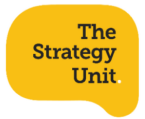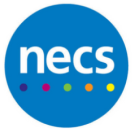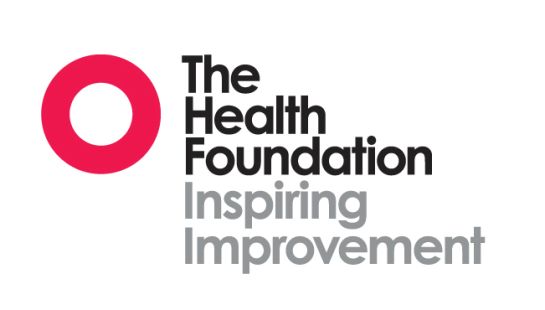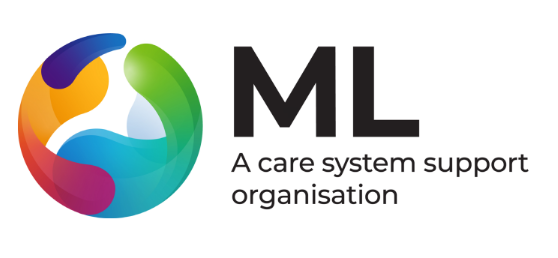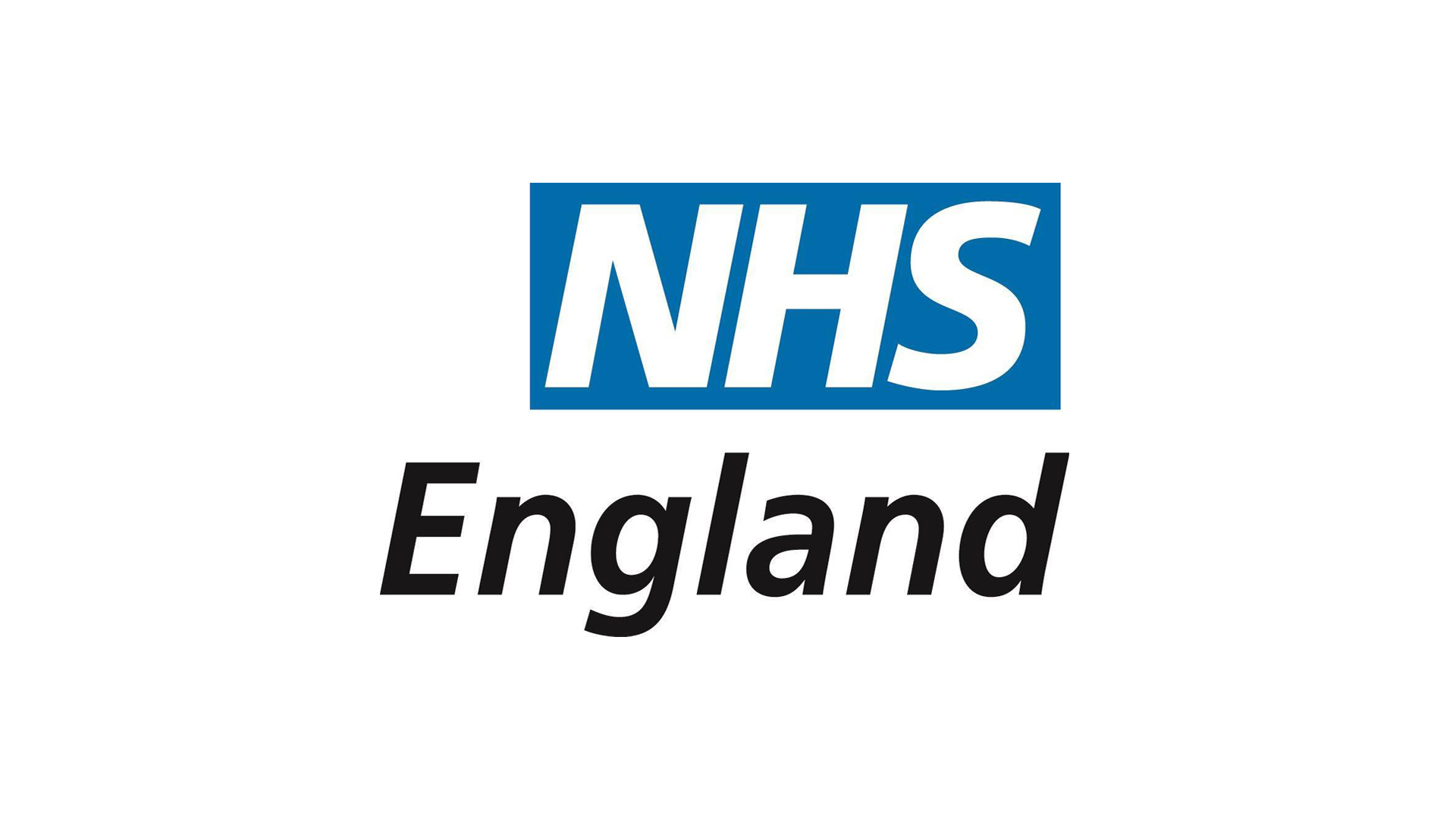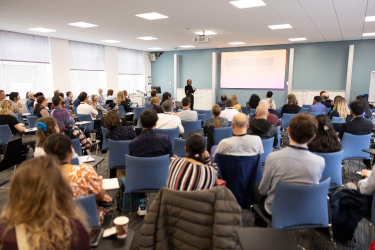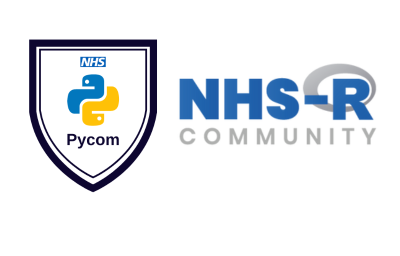Strapline Lorem Ipsum dolar cras posure auctor nec mi iaculis feugiat muada at quam
Cras posuere pellentesque eros, vehicula accumsan ante ultrices quis. Nam auctor luctus euismod. Donec pellentesques nec mi iaculis feugiat muada.

Many congratulations to you all on a great conference - one of the best I have been to for a long time in terms of relevance and stimulation so please pass that on and you can quote me if you like!
Professor Kiran Patel Medical Director, University Hospitals Coventry & Warwickshire
What is this Conference?
Lorem ipsum dolor sit amet, consectetur adipiscing elit. Nunc accumsan orci ac erat ullamcorper posuere. Nulla luctus, velit vel sodales auctor, risus ex dictum tortor, vitae pharetra turpis diam vitae diam. Sed vehicula tellus id est ultrices, at ultrices turpis semper. Nullam viverra ante a faucibus ullamcorper. Duis vitae sapien iaculis, viverra lorem eu, scelerisque enim. Duis eget mi non lorem dignissim porttitor. Morbi porta nulla at sem condimentum laoreet.
Accordion
Why does the conference exists - vision
Donec lobortis gravida laoreet. Nullam ut rhoncus turpis, vitae ullamcorper ipsum. Aenean a scelerisque diam. Nunc feugiat eu ligula vel varius. Interdum et malesuada fames ac ante ipsum primis in faucibus.
Lorem ipsum dolor sit amet, consectetur adipiscing elit. Aenean sit amet augue et massa eleifend dapibus. Maecenas ullamcorper luctus sapien ac commodo. Donec lobortis gravida laoreet. Nullam ut rhoncus turpis, vitae ullamcorper ipsum. Aenean a scelerisque diam. Nunc feugiat eu ligula vel varius. Interdum et malesuada fames ac ante ipsum primis in faucibus.
Lorem ipsum dolor sit amet, consectetur adipiscing elit. Aenean sit amet augue et massa eleifend dapibus. Maecenas ullamcorper luctus sapien ac commodo. Donec lobortis gravida laoreet. Nullam ut rhoncus turpis, vitae ullamcorper ipsum.
Who is organising the conference?
Why attend/Who is the conference for?
Expand on nature of theme
Details of the date, venue etc
Call to Submit Abstracts
Text with image Lorem ipsum dolor sit amet, consectetur adipiscing elit. Nunc accumsan orci ac erat ullamcorper posuere. Nulla luctus, velit vel sodales auctor, risus ex dictum tortor, vitae pharetra turpis diam vitae diam. Sed vehicula tellus id est ultrices, at ultrices turpis semper.
Nullam viverra ante a faucibus ullamcorper. Duis vitae sapien iaculis, viverra lorem eu, scelerisque enim. Duis eget mi non lorem dignissim porttitor. Morbi porta nulla at sem condimentum laoreet.
Sed vehicula tellus id est ultrices, at ultrices turpis semper. Nullam viverra ante a faucibus ullamcorper vitae sapien iaculis. Nunc accumsan orci ac erat ullamcorper posuere.
Register your Interest for HACA 2024
Telford International Centre
In-Person and Online
23-24th July 2024
Lorem ipsum dolor sit amet, consectetur adipiscing elit. Aenean sit amet augue et massa eleifend dapibus.

Key Note Speakers - quick look
Theme of the last Conference
Text with image Lorem ipsum dolor sit amet, consectetur adipiscing elit. Nunc accumsan orci ac erat ullamcorper posuere. Nulla luctus, velit vel sodales auctor, risus ex dictum tortor, vitae pharetra turpis diam vitae diam. Sed vehicula tellus id est ultrices, at ultrices turpis semper. Nullam viverra ante a faucibus ullamcorper. Duis vitae sapien iaculis, viverra lorem eu, scelerisque enim. Duis eget mi non lorem dignissim porttitor. Morbi porta nulla at sem condimentum laoreet.
Sed vehicula tellus id est ultrices, at ultrices turpis semper. Nullam viverra ante a faucibus ullamcorper vitae sapien iaculis. Nunc accumsan orci ac erat ullamcorper posuere. Nulla luctus, velit vel sodales auctor.
Etiam a leo vitae ante fringilla mattis. Suspendisse in augue mi. Class aptent taciti sociosqu ad litora torquent per conubia nostra, per inceptos himenaeos. Nullam vitae justo dolor. Nullam sed feugiat nisl. Quisque nec enim accumsan, aliquet elit in, imperdiet nunc. Donec vel mi fermentum, cursus orci rutrum, feugiat neque. Suspendisse ut dolor facilisis, pharetra quam non, ultrices dui.
Sed et porta neque. Nulla facilisi. Fusce consectetur facilisis sollicitudin. Cras vel arcu convallis, tincidunt nibh non, placerat neque. Duis vel ornare purus. Nunc vehicula, magna ac finibus imperdiet, tortor metus semper turpis, eu lobortis tellus felis nec elit. Sed leo lectus, pulvinar eu nisl non, consectetur elementum.
Sessions donec lobortis gravida laoreet. Nunc feugiat eu ligula vel varius.
Sessions donec lobortis gravida laoreet. Nunc feugiat eu ligula vel varius.
Sessions donec lobortis gravida laoreet. Nunc feugiat eu ligula vel varius.

Testimonials
"It was magnificent!"
"Many congratulations to you all on a great conference - one of the best I have been to for a long time in terms of relevance and stimulation so please pass that on and you can quote me if you like!"
"Many congratulations to you all on a great conference - one of the best I have been to for a long time in terms of relevance and stimulation so please pass that on and you can quote me if you like!"

This conference is in-person and online
Situated in the heart of the UK, TIC’s hugely accessible location offers all the benefits of a city centre, without the hustle and bustle.
Following a £250 million investment, the purpose-built Convention Quarter was created with modern day event organisers in mind. Sitting opposite the main venue, it features a host of restaurants, bars, hotels, and leisure facilities. Telford town centre is just a short walk away, providing further opportunities for entertainment and
activities.
For those who prefer the great outdoors, the stunning Shropshire countryside provides breathtaking views and scenic distractions.
Telford International Centre
International Way
Telford
Shropshire
TF3 4JH
By Road
By Rail
By Air
Accommodation
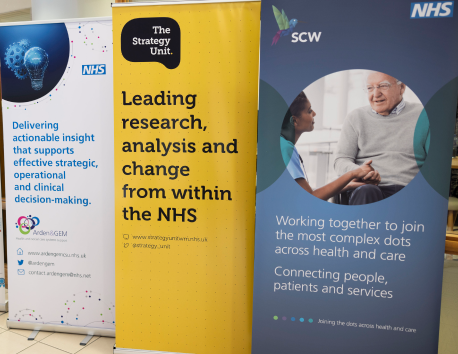
Sponsorship Places
Lorem ipsum dolor sit amet, consectetur adipiscing elit. Aenean sit amet augue et massa eleifend dapibus. Maecenas ullamcorper luctus sapien ac commodo. Aenean sit amet augue et massa eleifend dapibus
Key Note Speakers
Image/Icon Grid with Text
Lorem ipsum dolor sit amet, consectetur adipiscing elit. Aenean sit amet augue et massa eleifend dapibus. Maecenas ullamcorper luctus sapien ac commodo.
Lorem ipsum dolor sit amet, consectetur adipiscing elit. Aenean sit amet augue et massa eleifend dapibus. Maecenas ullamcorper luctus sapien ac commodo.
Lorem ipsum dolor sit amet, consectetur adipiscing elit. Aenean sit amet augue et massa eleifend dapibus. Maecenas ullamcorper luctus sapien ac commodo.
Lorem ipsum dolor sit amet, consectetur adipiscing elit. Aenean sit amet augue et massa eleifend dapibus. Maecenas ullamcorper luctus sapien ac commodo.
| Auditorium | |
|---|---|
|
Opening Day 1: Welcome to HACA 2024 |
|
|
Keynote: Sir Andrew Dilnot. Why the Analysis Counts. Analysis is essential to policy. Done well, analysis can make the work of policy making easy and clear. Ignored, or done badly, and we end with muddled and failed policy. Andrew will argue that analysts and analysis are a vital tool in thinking about the challenges and opportunities we face, and how to respond to them.
|
|
|
Keynote: Anita Charlesworth, Health in 2040. Anita will provide an overview of recent trends in major illness and projections for future trends up to 2040. She will explore how the trends in population health risk factors could shape the future demand for health care. She will explore the potential for a future expansion or compression of morbidity. Anita will outline how the trends in major illness might affect the type of need which the NHS will be seeking to address. She will extend the analysis to share modelling results which have attempted to estimate the implications of major illness trends for NHS funding and the model of care. She will look at the pattern of inequality associated with changing need and the implications for wider policy including economic inactivity and pensions. The presentation will use the results of the Health in 2040 analytical partnership between the Health Foundation’s REAL Centre and University of Liverpool. It is an example of the use of micro-simulation modelling for health policy. The study draws heavily on linked primary care and hospital data with evidence from survey data. |
|
|
Participatory Research and Involving Experts by Experience: Talk and Panel Discussion. Main Presenter: The Health Foundation |
|
|
Keynote: Andy Boyd. UK Longitudinal Linkage Collaboration: a transformative national resource linking UK longitudinal study data with diverse routine records The UK Longitudinal Linkage Collaboration (UK LLC) is a transformative national resource which enables analysts to pool rich and diverse data from over 25 UK longitudinal population studies with participants linked health (NHS), socio-economic and environmental records. It enables analysts to investigate multidisciplinary research questions, service interactions and outcomes, that could not previously be considered due to the scale and detail of the combined information. |
|
|
Reflections on the Role of the Analyst: An Audience with Anita Charlesworth. Interviewer: Fraser Battye |
|
|
Supporting the Measles Outbreaks using Geospatial Technologies. Main Presenter/s: Ian Maxfield Measles is highly infections- in fact the most infectious disease transmitted by the respiratory route. It can be severe, especially in young infants and the immunosuppressed and it can cause miscarriage and stillbirth in pregnancy. The most effective way to control it is high uptake of two doses of the Measles, Mumps and Rubella (MMR) vaccine. The World Health Organisation (WHO) set a target of 95% uptake, however in England, the rate for 2 doses at 5 years of age has been well below at 86%. The UK briefly achieved Measles Elimination in 2016 and 2017, but transmission of the disease returned again in 2018, when Europe was suffering multiple epidemics. Cases dropped during the Covid pandemic due to the societal and travel restrictions implemented, but Measles cases have returned, with 789 cases logged by UK Health Security Agency (UKHSA) between October 2023 and 21ST March 2024, the majority in London and the Midlands. Background/objective Method Results/Further development Conclusion |
|
|
Building a Better Geospatial Data and Analytic Function for Improved Public Health Outcomes. Main Presenter/s: James Lewis The Geospatial Team at the UK Health Security Agency is learning the lessons of COVID19 to enhance how geospatial data is managed, analysed and shared, to improve public health outcomes. |
|
|
Utilizing Location Analysis in NHS Blood and Transplant. Presenter: Gareth Humphreys My presentation, titled "Utilizing Location Analysis in NHS Blood and Transplant " will showcase the pivotal role of location analysis in the strategic decision making of NHS Blood and Transplant (NHSBT). Specifically, it will demonstrate how this analytical approach aids selecting optimal locations for new donor centres, thereby enhancing blood collection capacity and catering to diverse organisational objectives. NHSBT employs a combination of temporary donation sessions, in venues such as church halls and sports clubs, alongside permanent donor centres in city centres or on hospital sites. Additionally, certain blood products like platelets and plasma, can only be donated at donor centres. In response to the nation's evolving donation needs, NHSBT has been charged with establishing new centres. During the presentation, I will delve into the methodologies, datasets, and tools utilized to pinpoint suitable locations, starting from an extensive list of towns and progressively refining it to specific streets, for three distinct projects. These include maximizing the collection of Ro blood—an in-demand blood type used in treating Sickle Cell patients—expanding existing donor centre capacity by establishing a new centre, without diminishing existing sites, and relocating an existing centre once a lease has ended. Furthermore, I will underscore the significance of high-quality data analysis in the decision-making process for selecting new centres, as well as its efficacy in addressing stakeholder challenges. |
|
|
Closing Day 1 |
| Ironbridge | |
|---|---|
|
Removing Friction in a Data Flow by Automated Geocoding of Assault Locations Captured as Free Text in Emergency Departments. Main Presenter/s: Michael Cheetham Assaults recorded in ED represent a substantially different set of events to those recorded by the police. Since 2014, data on assault location and mechanism has been collected in Emergency Departments in England under the Information Sharing to Tackle Violence standard (ISTV) and is used to identify geographical hotspots, temporal trends and changes in the nature of violence. This informs various violence reduction activity. Implementation of this nationally has been challenging because geocoding has been done manually at a local level. The objective of this study is to test the value of an automated geocoding algorithm. Using data on all those presenting at a Barts Health UEC service in 2022 and 2023 recorded as having been assaulted (n= 6,998), this presentation describes a pilot natural language processing methodology for converting this free text to a point location. The methodology uses a combination of regular expressions (to identify postcode); phonetic matching using refined Soundex to a place name list (to identify streets and places) and supervised machine learning using subword vectors generated by fastText (to identify assaults happening at home). Up to 93% of the test data (n= 1,730) have the location identified as well as the entry allows. Of the errors the majority are entries that should have been matched which are identified as not being matchable. This performance is good enough for most operational uses of ISTV data. |
|
|
Automated Identification of Suicide Attempts in Police Record Reports. Main Presenter/s: Ehsan Taati Keywords: Knowledge extraction, Natural Language Processing (NLP), Suicide attempts, Mental Health Interventions, Large Language Model Aim: Background: Methodology: Results Conclusion: |
|
|
Accelerating NHS Feedback moderation at NHS.UK with NLP. Main Presenter: Eladia Liliana Valles Carrera Background: Aim: Methods: Results: Conclusions: |
|
|
National Competency Framework: The Future of the Data and Analytics Workforce. Main Presenter: Sarah Louise Blundell Background: Aim: Methods: Results: Conclusion: |
|
|
Nursing local, thinking global: UK Registered Nurses and their Intentions to Leave. Presenter: Nuha Bazeer Background: In recent years, record numbers of nurses trained outside of the UK and EU (overseas-trained nurses) have moved to the UK and are now working in the NHS, filling vacancies Whilst UK nurse “inflow” is well evidence, outflow to other countries is more difficult to track, with limited evidence on the indicators prior to nurses leaving the UK, or the workforce. Aim: To identify trends in the potential outflow of UK registered nurses between 2018/19 and 2022/23 , and explore their connection to changes in the global labour market. Methods: Nursing and Midwifery Council (NMC) registered nurses seeking to work abroad must apply for a Certificate of Current Practicing Status to prove their practicing status to foreign registration authorities. The number of nurses applying for a certificate is therefore a reasonable proxy for potential outflow and was used to calculate the likelihood of UK registered nurses seeking employment abroad. Trends in application numbers were assessed against the length of time on the register before application, their training country, and the country they applied to, relative to the total number of nurses on the register. Results: In 2022/23, overseas-trained nurses were 7 times as likely to apply than UK-trained nurses and accounted for 70% of the almost 12,000 overall applicants. Almost 25% of overseas-trained nurse had 3 or fewer years on the UK register before applying, compared to around 3% in 2018/19. Over 80% of applications were for potential destination countries with attractive labour market conditions, policies, and remuneration: Australia, New Zealand, and the USA. |
|
|
Describing Trends in General Practice Staffing Mix using Latent Profile Analysis. Presenter: Alexander Lawless Background: Methods: Results: Implications: |
|
|
Understanding Drivers of Productivity in the General Practice Sector. Presenter: Anastasiia Zharinova With funding challenges and growing demand on health services, it is more important than ever to ensure that the NHS is run efficiently. While NHS acute productivity is well researched, there is limited knowledge about how productive the General Practice sector is and what factors contribute to its productivity the most. This work investigates different approaches to estimating productivity of General Practices. We explored two metrics: total factor productivity and labour productivity. We linked multiple datasets, such as GP Workforce Data, ONS Demographics, NHS Payments to GP, GP Appointments Dataset and others. We applied regression modelling to analyse how General Practice characteristics, patient characteristics and other factors affect productivity in general practices. To ensure quality of the model and mitigate data limitations, we built both panel models and cross-sectional models and conducted additional robustness checks. In addition, we investigated quality metrics to test feasibility of quality adjustments and evaluate if there is a correlation between quality and productivity of General Practices. Over the course of the project, we worked with Primary Care policy teams and data teams to ensure both a correct interpretation of data insights and clear practical outcomes from analytical insights. This analysis can inform policy decisions around additional support for General Practices. It can also support practices when making operational decisions about optimal skill mix of staff or addressing population needs. In addition, this work contributed to Primary Care Data Strategy and can inform future analysis in this area, for example, productivity of pharmacies. |
|
|
Revolutionising the COVID-19 Epidemiological Bulletin. Main Presenter: Colleen Dempster The COVID-19 Health Protection Surveillance team at Public Health Agency (PHA), Northern Ireland, produce a weekly, public facing, COVID-19 Epidemiological Bulletin. Initially the production of the bulletin used various systems such as Access, Excel and Word, which where embedded together. This manual process was time consuming and error-prone due to the limitations of Microsoft. There was a risk that accurate data, critical to the surveillance of the ongoing pandemic, might not be available. This would impact decision making on testing policies, case management and vaccination campaigns. It was crucial that we identified and implemented a more resilient and robust way of producing the COVID-19 Epidemiological Bulletin. We started by bridging the gap between Access and Microsoft by writing R scripts. This protected us from the immediate loss of data. We streamlined the process to R Markdown, moving away from Excel and Word. We worked with other teams moving to a cloud-based data analytics platform. We created various R-Studio-Connect apps to produce automated outputs that have made reporting processes more efficient and reduced the likelihood of error. This was a long process as we had to map out all data pipelines coupled with extensive data validation steps. Revolutionising the production of the COVID-19 Epidemiological Bulletin was the result of a successful cross-departmental collaboration project lasting around 18 months. This project required staff upskilling and developmental work to take place in parallel, whilst ensuring information governance was in place and continuing to respond to the acute demands of the pandemic. Investing this time, allowed automation of reports which has reduced person hours, increased accuracy by removing any chance of human error and has enhanced the skill set of our staff. This work has been used as a template for other workstreams, thereby further improving efficiencies, allowing staff to work in a more agile and collaborative way. |
| Wenlock | |
|---|---|
|
Alcohol Dependence Dashboard and Return on Investment Tool: Heath Inequalities and Sustainability. Main Presenter: Bethany Thompson Keywords: dashboard, visualisation, metrics, ROI, impact, health inequalities Introduction: Methodology: Conclusions and recommendations for further research: |
|
|
Scaling Healthcare Equity Analysis of Access and Experience. Presenter: Matthew Eves |
|
|
Health Inequalities in Rates of Activity in Emergency Departments for Children. Main Presenter: Robert Watkins Activity at University Hospitals Leicester has increased by 13% since 2018/19, for children. To understand and address this increase in demand, a small team was commissioned to undertake analysis of rates of activity and possible links to health inequalities. The team included data analysts, Paediatric ED consultants, Public Health professionals and commissioners. The findings are to be presented to the ICB board. |
|
|
Re-designing the Mental Health Learning Disability and Autism (MHLDA) Integrated Performance Reporting for the NHS South East Region. Main Presenter: Jamie Gale Purpose: Methods: Results: |
|
|
Co-producing and Piloting a Quality Early Warning Signs Framework. Main Presenter: Kathryn Marie Lupton How do we get better at integrating analytics and research into national policy development? How do we co-produce analytical and policy tools in a meaningful and iterative way with end users? This presentation will draw on emergent learning from the piloting of the National Quality Board’s Quality Early Warning Signs Framework, being led by NHS England. The QEWS framework has been designed to support providers, systems, regional and national teams to identify, mitigate and manage early signals about the quality of care, relating to leadership, culture, governance and other considerations. The approach is underpinned by a dashboard hosted on Model Health System, and a framework signposting to qualitative data and wider sources of information. It is currently being piloted in four Integrated Care Boards and being overseen by a Working Group with representatives across system, regional and national teams. By drawing on the learning from these pilots, this presentation will explore: |
|
|
In-Depth Analysis and Insight: A Cancer Pathway Review within an Integrated Care Board. Main Presenter: Ruth Green This presentation will focus on the work NHS ML BI Consultancy Unit are leading, in collaboration with NHS ML Nursing and Urgent Care Team, to support an Integrated Care Board (ICB) to understand the potential opportunities for improvements in cancer pathways. Background: Funded by the regional Cancer Alliance, the ICB identified the need for a deep dive cancer pathway analysis. The areas of focus of this in-depth review were late-stage cancer diagnosis and a review of primary care cancer referrals. Aim: Approach / Key message: Adopting a mixed method analysis enabled a rich study to develop, providing the evidence needed to inform recommendations for improvement and transformation of cancer pathways across the integrated care system, with the potential to be adopted across other ICBs / regions. |
|
|
Using Machine Learning and Secondary Care Activity Data to Identify Risk of Cancer Earlier. Main Presenter: Hadi Modarres Introduction: Method: Results: Discussion: |
|
|
The Lincolnshire Living with Cancer Programme Dashboard - Transforming Words and Feelings to Numbers and Statistics. Main Presenter: Kathie McPeake 35,000 people are living with cancer in Lincolnshire. This is predicted to rise to over 45,000 by 2030. A cancer diagnosis can have a profound effect on a person, with not just physical health impacted. People’s mental health, finances, relationships and work can also be negatively affected. Evidence shows that people who have access to good, personalised support before and after a cancer diagnosis often have better outcomes than those who don’t. |
| Beckbury | |
|---|---|
|
Getting Our Tools Used: Learning from the First Year of an NHS Data Science Team. Main Presenter: Brandon Chapman With a small data science team now in place at RCHT, we have both developed tools and worked on getting them used in operational practice. We have done this because of the ability of data science to open up new ways of understanding the range of information available to the hospital, especially on the predictive side, enabling the operational and clinical teams to take more informed actions. |
|
|
Why Modelling of Inpatient Discharge Predictions is Key to Reducing ED Admitted Patient Delays and Elective Cancellation: An Example from UCLH. Main Presenter: Dr Zella King In a health system under pressure, with hospitals operating at capacity, difficult decisions are made daily. Operational managers must decide when to initiate escalation measures like discharging patients earlier, cancelling elective admissions or diverting ambulances because patient care is no longer safe. These decisions depend on having a solid picture of current capacity and imminent pressures. Gaining that picture often involves manual data collection, validation of data in the Electronic Health Record (EHR), frequent meetings with ward managers, and the use of simple heuristics to predict end-of-day bed state. With such activities, the promise of EHRs to unleash greater productivity and better insight remains unrealised. This is unfortunate both for hospitals themselves and for the national, regional and sector bodies who are seeking real-time oversight of urgent and emergency care through System Control Centres and the Operational Pressures Escalation Levels (OPEL) framework At HACA 2023 we presented a predictive model of short-term demand for emergency beds, which is in daily use at UCLH. That model provides one tool to inform decision-making about escalation. However, for the full picture, the ‘supply side’ is also important. In this joint talk from an operations director and a data scientist, we introduce models that predict short-term discharge activity at different levels of aggregation and certainty. When combined with predictions of demand, and based on real-time data, such models give operational managers better insight about where capacity needs to be freed up, and when to initiate escalation measures. We discuss the data challenges and some of the realities of hospital life that make this important work difficult. We lay out a vision of how predictive modelling of short-term capacity can supplement the view provided by an EHR, and how this can lead to better informed decision-making about the provision of urgent and emergency care. |
|
|
A&E Admissions Forecasting: How to Develop, Maintain and Improve a Data Science Model in Production. Lessons Learnt. Presenter: Jane Kirkpatrick Background: Rationale of our work: Actions: Outcome: |
|
|
Uncertainty, Politics, and Analytics: Building Projections of the Elective Waiting List. Main Presenter: Melissa Co In January 2023, the Prime Minister pledged that ‘NHS waiting lists will fall and people will get care more quickly’. In October 2023, we analysed what it would take to achieve this pledge before the general election. The NHS elective care waiting list has been growing since 2013 and increased sharply during the pandemic because elective care was suspended. Even after lockdowns were lifted, the waiting list continued to grow because the number of treatments completed had not caught up with the steady stream of new referrals. |
|
|
Predicting Deaths on the Waiting List. Main Presenter: Kamil Barczak The growing NHS waiting list has been in the spotlight for years. Cuts to the NHS budget, the growing elderly population and the effects of 2020 COVID-19 pandemic have all contributed to record breaking growth of those waiting to be seen and the duration of the referral to treatment times (RTT). A report by the Health Foundation UK suggests that the NHS waiting list is expected to peak at more than 8 million by summer 2024 . Coinciding with long RTT times are deaths of patients on waiting lists. There’s a real concern that longer RTT mean more deaths and increased disease impact. Apart from reducing the RTT, methods to prioritise those who are most vulnerable to the effects of increased RTT and can be effective and minimise the impact of long waiting times. Our aim was to develop a risk stratification tool using machine learning to identify patients most likely to die within 12 months of their pathway journey. Retrospective open pathways and death data was collected, cleaned and temporalized. A recent 12-month period was chosen to track deaths within 12 months of starting a pathway. A previous 12-month period was used for training. Any information prior to the beginning of the training data was used to calculate metrics of interest such as death rate by pathway. We used a Synthetic Minority Over-sampling Technique (SMOTE) and random under sampling to reduce the impact of data imbalance . We also used a logistic regression-based feature selection method to reduce the dimensionality of the training data and modelled risk of death per pathway using a logistic regression model, treating each record as a unique sample. Model outputs have been integrated into a Power BI dashboard and deployed onto Cornwall’s platform. We plan to collect feedback from the client in the upcoming weeks. |
|
|
The Use Of Real-World Data In Decision Making At The National Institute For Health And Care Excellence (NICE). Presenter: Shaun Rowark For the past 25 year the National Institute for Health and Care Excellence’s (NICE) core purpose has been to help practitioners and commissioners get the best care to people fast, while ensuring value for the taxpayer. While this remains constant for NICE how we make decisions has changed to ensure we focus on what matters most, provide useful and useable advice, and constantly learn from data and implementation. |
|
|
Right Data, Right Method, Right Insight - The Development of the Manchester Measuring Inequalities Toolkit. Main Presenter: Neil Bendel Measures of socio-economic inequalities are important markers for health and social policy and for society in general. It is important that indicators and tools which purport to measure socio-economic inequalities are both accurate and presented in a way that minimises the chances of misinterpretation and supports better quality decision making. Drawing on the earlier work of ScotPho and PHE, the Manchester Measuring Inequalities Toolkit is designed the fill the need for an easy to use, interactive training package which illustrates and explains some of the most commonly used methods for measuring health and other inequalities, including simple measures of inequality gaps, regression-based inequality measures (e.g. Slope Index of Inequality), and Lorenz-curve-based measures, and how these should be calculated, visualised and interpreted. Through this, the Toolkit will help to improve the development and monitoring of interventions to address socio-economic inequalities by helping information analysts and policy makers to produce and utilise more statistically rigorous and accurate outputs describing the scale and nature of the inequalities in a local area. This presentation will describe in more detail the purpose of the Measuring Inequalities Toolkit, how it was commissioned and the initial content. It will go on to explain how selected modules were piloted by a group of analysts from a range of different organisations and how the content was then revised following the feedback provided. Finally, it will describe the next steps in the development of the toolkit and how this fits in with the wider programme of work to monitor the impact of Making Manchester Fairer – the City’s action plan for tackling health inequalities. |
|
|
Supporting the Development of a 'Healthier and Fairer' Programme using System Wide Data and Insight. Presenter: Anna Pickford The Healthier and Fairer Programme within Northeast and North Cumbria is a whole health and care system transformational programme of prevention, healthcare inequalities, and social and economic inequality projects to improve population health. The development of the programme has included the use of analytics from inception, adopting modelling and population health management approaches, a strong culture of evaluation and joint working across system partners. The Business Intelligence function has supported with 5 core components; Intelligence and Insight – Providing evidence-based advice on emerging themes for the population, producing Healthcare Needs Assessments, delivering training on identifying inequalities within wider Programmes of work, advising how to measure and demonstrate impact. Analytics and dashboard development – Providing cohort analysis for specific projects, creating a model of estimate need for increased weight prevalence, producing Power BI dashboards for workstreams to aid ongoing monitoring of key population issues specific to their agenda. Performance – Demonstrating progress against national and local priorities such as CORE20plus5 agenda, ICB priority strategies and national policy. Research and Evidence – Working in partnership with universities to evaluate specific projects. Writing quantitative protocols, undertaking analysis and contributing to the writing of academic and board papers. Data quality and data flows – identifying appropriate data flows and where not available, working with providers to create new flows. We currently have 5 self-service workstream dashboards live which are available to all system partners including Local Authorities, Acute and Mental Health providers and OHID. The dashboards include; Alcohol Prevention, Healthy Weight and Treating Obesity, CVD prevention, Tobacco Control, Public Health and Prevention in Maternity and an Overarching Healthier and Fairer dashboard. We have embedded routine performance reports to ICB executive, 4 evaluations are in progress and have completed three Healthcare Needs Assessments relating to the prevention agenda for NENC ICB. |
| Auditorium | |
|---|---|
|
Opening Day 2: Welcome to HACA 2024 |
|
|
Keynote: Emma Gordon. Linking health and administrative data: mitigating the missed use of data Imagine a world where it didn’t matter what your agency was , your priorities were rooted to one over-arching strategic plan for our nation. An ambition spanning multiple organisations with every single one of us a pivotal part of the journey. A way of working powered by the rise of whole systems insights through multi agency collaborations, towards a single mission. To ensure every single citizen in our nation was THRIVING ! If we make this HACA the moment that changed our nations by putting away our logos and ego and combining our knowledge, technical expertise, wisdom and humility to transform how we do business together ! |
|
|
Keynote: Richard Humphries. Adult Social Care and Health: Policy, Purpose and the Power of Data. |
|
|
Current and Future Patterns of Inequalities in Diagnosed Illness by Deprivation. Main Presenter: Ann Raymond Introduction: Methods: We used the Cambridge Multimorbidity Score (CMS) as our multimorbidity measure. This assigns a weight to 20 common long-term conditions based on individuals’ healthcare use and their likelihood of death. We further focus on “major illness” which corresponds to a CMS greater than 1.5. Results: We also find that in 2019, the share of working age people living with major illness in the most deprived 10% of areas in England (14.6%) was more than double the rate seen in the least deprived 10% of areas (6.3%). In 2040, we project these rates to remain largely unchanged at 15.2% (13.0%, 17.6%) and 6.8% (5.4%, 9.1%) respectively. Discussion: |
|
|
Data, Analytics, and Decision Making in Adult Social Care |
|
|
Access All Areas- Creating Space for Generic and Open Source Simulation Modelling. Presenter: Sally Thompson Simulation models provide longitudinal insight into a system’s behaviour, whilst creating a space for risk-free exploration of diverse scenarios. Traditionally, these models are often commissioned for a singular customer group, against one agenda, yet the questions a model seeks to address are not likely to be unique, particularly within health and care. The bespoke nature of simulation modelling can be a barrier to its wider use, as can the need for specific, often expensive, software to be able to interact with the model. |
|
|
Keynote: Marc Farr. It’s the Data [and Analytics] Stupid Marc will discuss the importance of the data layer and the role of the analyst in how we tackle planning, population health and research. With a data landscape made even more chaotic (and exciting) than ever before by the FDP, the SDE, the emergence of AI, RAP and RPA Marc will attempt to set out a framework for how we develop data strategies for the next five years. |
|
|
Harnessing the Power of NHS Jobs Vacancy Data to Support the National Competency Framework's Vision for a Standardised Data Professional Workforce. Presenter: Thomas Owen The NHSBSA has access to the NHS Jobs dataset, which contains job description text for hundreds of thousands of vacancies advertised through NHS Jobs each year. Analysis of the NHS Jobs dataset could complement initiatives, such as the National Competency Framework (NCF), and help improve the recruitment and retention of NHS staff. The NCF was introduced by NHS England to enhance the professionalisation and standardisation of Data Professional roles. An analysis using the NHS Jobs data could supplement the NCF by assessing the current variability within the Data Professional vacancies. We analysed 1.7K Data Professional vacancies advertised through NHS Jobs during the 2021-22 and 2022-23 financial years. Technical skills were extracted from job descriptions using a dictionary-based approach and vacancy similarities estimated using the Jaccard Index. Dimensionality reduction, via multidimensional scaling, were applied to visualise the vacancy similarities. This approach quantifies the degree of variability across vacancies before the introduction of the NCF and helps us to assess the current Data Professional landscape. Our work aligns with the objectives of the NCF to help standardise and professionalise the NHS data workforce. A recent report by NHS England forecasts that the NHS Digital, Data, and Technology workforce will increase by 69% between 2020 and 2030 to meet demand. Given the rapidly evolving workforce, the success of initiatives such as the NCF is paramount. Our analysis could assist the NCF, providing a quantitative framework to measure its impact and efficacy on the workforce. |
|
|
Combining Analytics and a Complexity-Informed Relational Approach to Facilitate System Change and High-Quality Collaborative Decision Making in Midlands In-hospital Paediatrics. Presenter: Jennifer Wood When clinicians presented NHS senior leaders in the Midlands with complex problems that would require multi-organisation solutions, their ability to respond to the challenge was highly constrained. One the one hand, how could they generate the kind of “hard” evidence typically used to manage trade-offs in moving resource around? And on the other hand, how could they generate solutions that respond to the compositional, dynamic, experiential and governance complexity of a system of 23 Provider Trusts? |
|
|
Neurodiversity at Work. Main Presenter: Dani Collier Background /Objective: Methods: Results: Conclusion: |
|
|
Closing of HACA 2024 |
| Ironbridge | |
|---|---|
|
Improving Acute Hospital Flow Through Real-Time Stochastic Modelling of Daily Discharge Requirements for Onward Care. Presenter: Nick Howlett Failure to discharge acute hospital patients in a timely manner can lead to elevated acute bed occupancy which can compromise patient safety and have knock-on effects for upstream services such as Accident and Emergency. A barrier to timely acute discharge is often the availability of intermediate care services for patients that require continuing rehabilitative care past the point of being medically fit. In the NHS, these time-limited services are known as ‘Discharge to Assess’ (or D2A) and there are three pathways along which such patients can be routed following acute discharge readiness – Pathway 1 involves daily home visits and Pathways 2 and 3 involve bedded care (with the latter reserved for those with particularly complex needs). If there is insufficient capacity along the D2A pathways, then the patients wait (i.e., queue) within the acute hospitals. We develop a real-time computer simulation model to stochastically estimate, for each of the next ten days, (1) the number of acute patients that will become ready for discharge along each of the D2A pathways, and (2) the total number of acute patients that will be awaiting discharge (i.e., the queue size). These are based on personalised predictions of discharge readiness date and D2A pathway requirement for all currently admitted patients not yet in a D2A queue. These outputs are combined with the corresponding (non-personalised) predictions for new acute admissions, which are forecasted through a time-series method. The models, updated each day with the latest data, have been implemented in a large healthcare system in and around Bristol, with outputs used to support efforts to improve hospital flow through enhanced discharge planning. |
|
|
Development of a Python Package for Public Health Statistical Methods. Main Presenter: Jack Burden PHEindicatormethods is an R package which allows users to calculate key public health statistics quickly, based on the most up-to-date academic guidance. It provides functions for the generation of proportions, rates, Directly Standardised rates (DSRs), Indirectly Standardised Rates (ISRs), means, life expectancy and slope index of inequality (SII). Confidence intervals can also be generated, and data allocated to quantiles. The package is not only used in the Department of Health and Social Care (DHSC) but by statisticians across the world as it is publicly available through CRAN. |
|
|
Developing Health Trends in England in Quarto. Main Presenter: David Jephson Since 2020 there has been increased interest in online dashboard-style products as a mechanism for displaying data in an interactive and accessible format for the public. The value of such an approach was clearly demonstrated during the pandemic by the UK coronavirus dashboard. Health Trends in England (HTiE) is a new official statistics dashboard-style report which provides an easy to navigate summary of selected data from the Fingertips platform. Aimed at a non-technical audience, it presents trends for a selected key indicator for each of 11 public health focused topics via a summary page. A details page for each topic provides more information on the key indicator along with additional indicators on the topic. It brings together high-level trends data in one place for a coherent and accessible view of the nation’s health across topic areas. The dashboard uses existing data in a curated dashboard view with simpler visualisations. The report has been developed using reproducible code via Quarto. Data is fed directly from an API and styled to meet gov.uk requirements, whilst providing charts that could be presented in an interactive way. Modular code was developed (following Government Analysis Function guidance), creating the building blocks from which to structure our project. Various techniques were used to produce the pages for the dashboard, such as conditional rendering and use of YAML parameters. Formal launch of public Beta is expected in Spring 2024, with updates published on a monthly basis. Our presentation at the HACA conference will describe the approach we took, and key lessons learned. |
|
|
RAP - Faster, More Robust, and more Transparent Analytical Processes. Presenter: Warren Davies The “Data saves lives” DHSC report states that “We cannot deliver the change that we need to see – and our 10-year plans for cancer, dementia and mental health – unless we embrace the digital revolution and the opportunities that data-driven technologies provide.” A big part of achieving this is the RAP (Reproducible Analytical Pipelines) way of working, which emphasises automation, testing, sharing code, and the use of open-source tools. As noted in the Goldacre Review: “The NHS can and should rapidly adopt RAP working practices, both for service analysis and for research.” The RAP Squad at NHS England has spent over three years working to implement RAP across the organisation, engaging with multiple teams to help them improve their analytical processes. The aim of this poster is to provide an overview of the RAP process based on the lessons learned while working with these teams, and provide actionable insights that attendees can take away to use in their own work. These include key principles such as: • Automation The poster will provide an overview of the RAP approach, and signposts to where readers can learn more about how to apply the RAP principles in their own work. As more analysts adopt RAP, the impacts include: • More robust processes which improve the accuracy of publications |
|
|
Towards Effective Data Linkage: Introducing a Quality Assurance Framework for Enhanced Health and Care Analytics. Main Presenter: Giulia Mantovani Data Linkage is a business-critical process within many government organisations, including NHS England. Research publications, official statistics, but also many direct care applications depend on data linkage. Its importance is further amplified when considering privacy preserving principles that require to minimise the use of patients' personal identifiable information. Consequently, data linkage is initiated early in the data lifecycle, establishing a substantial reliance of downstream applications on the quality of the linkage process. |
| Wenlock | |
|---|---|
|
Enhancing Data Linkage for the NHS- How Generalisable are Probabilistic Models? Main Presenter: Jonathan Laidler Background: Aims: Methods: Results and Conclusions: |
|
|
Diagnostics in the Midlands: From Data to Action. Main Presenter: Lee Cadwallader-Allan The Diagnostics transformation programme at NHS England was a new initiative that occurred during the COVID19 pandemic. Each region had a multi-million pound programme to implement the findings of the Mike Richards review "Diagnostics: Recovery and Renewal". As identified in the review data for Diagnostics services was lacking, but the programme could not hope to achieve anything without data. I was appointed as the Data Analyst for Diagnostics in the Midlands region with a blank page; the aim to provide data, analysis and insights for the programme team to progress its objectives. What? How? Why? The journey I went on as a newly appointment data analyst in a new area was challenging yet exciting one - that is a story worth telling. |
|
|
An Early Warning System to Flag Uncontrolled Hypertension. Main Presenter: An Te Hypertension is considered uncontrolled, if untreated or given medications are ineffective. Nearly 14% of the population in Bedfordshire, Luton and Milton Keynes (BLMK) have been diagnosed with hypertension, which is increasing annually. Presently, there are no tools available in BLMK for patient-level monitoring of hypertension. Our aim was to create a tool by leveraging population-level linked datasets for the early identification of hypertension patients with unmet needs. The tool will enable clinicians to case-find patients using clinical measures pertaining to hypertension and other cardio-vascular risk factors. |
|
|
Activity and Evaluation Analysis for Neighbourhood Mental Health Teams in Birmingham and Solihull. Presenter: John O'Neill Birmingham and Solihull ICB have embarked upon a Mental Health (MH) Community Transformation programme. A component of this has been the deployment of ‘Neighbourhood Mental Health Teams’ that are co-located in primary care across Birmingham and Solihull. |
|
|
Using Causal Impact Analysis to Measure the Impacts of Changing from Multi-Bed to Single-Bed Hospital Rooms. Main Presenter: Sarah Lucas Traditionally, hospital beds have been in shared multi-bed bays, however, there has been a move both in the UK and globally towards single-bed inpatient rooms. Indeed, current NHS England guidelines state that at least 50% of new hospital inpatient beds must be single-bed rooms (Health Building Notice, 2009). Recent reviews of published evidence have suggested that single-bed rooms improve bed management and patient flow with reduced bed closures due to improved infection control, while also promoting greater privacy and dignity for patients and their families. There is a lack of strong quantitative evidence in the literature to support the benefits of single-bed rooms and concerns have been raised about potential negative impacts. Hence it is important to better understand the potential impacts of a switch to single-bed accommodation when building future hospitals. A number of hospital sites within England have already wholly or significantly switched to single-bed inpatient accommodation allowing them to be studied as natural experiments. Causal Impact Analysis (Broderson et al., 2015) is a technique that uses a control group (similar hospital providers, with similar catchment populations, patient case-mix and prior trends) to estimate a counterfactual against which we can quantify the change in the study hospitals following their switch to single-bed rooms. This method is implemented using the CausalImpact package in R. Our analysis investigates the impact on measures from three domains 1) Health and Safety, 2) Patient and Staff Experience and 3) Productivity and Efficiency to determine the extent of any benefits, or negative impacts that need to be mitigated with single-bed room sites. Determining any reductions in length of stay is of particular interest as this has the potential to increase capacity and reduce costs, offsetting additional costs typically associated with building and maintaining hospitals with single-bed rooms. Traditionally, hospital beds have been in shared multi-bed bays, however, there has been a move both in the UK and globally towards single-bed inpatient rooms. Indeed, current NHS England guidelines state that at least 50% of new hospital inpatient beds must be single-bed rooms (Health Building Notice, 2009). Recent reviews of published evidence have suggested that single-bed rooms improve bed management and patient flow with reduced bed closures due to improved infection control, while also promoting greater privacy and dignity for patients and their families. There is a lack of strong quantitative evidence in the literature to support the benefits of single-bed rooms and concerns have been raised about potential negative impacts. Hence it is important to better understand the potential impacts of a switch to single-bed accommodation when building future hospitals. A number of hospital sites within England have already wholly or significantly switched to single-bed inpatient accommodation allowing them to be studied as natural experiments. Causal Impact Analysis (Broderson et al., 2015) is a technique that uses a control group (similar hospital providers, with similar catchment populations, patient case-mix and prior trends) to estimate a counterfactual against which we can quantify the change in the study hospitals following their switch to single-bed rooms. This method is implemented using the CausalImpact package in R. Our analysis investigates the impact on measures from three domains 1) Health and Safety, 2) Patient and Staff Experience and 3) Productivity and Efficiency to determine the extent of any benefits, or negative impacts that need to be mitigated with single-bed room sites. Determining any reductions in length of stay is of particular interest as this has the potential to increase capacity and reduce costs, offsetting additional costs typically associated with building and maintaining hospitals with single-bed rooms. |
|
|
Identifying Gaps in Service by Assessing Patients Against NHS England’s Discharge Ready Date Criteria: An Information Analyst and Flow Matron Discuss Implementing a Data Science Approach to Avoid Delayed Discharge. Main Presenter: Claire Tucker Hospitals are at capacity with spell length increasing. This is partly due to hospital inpatients staying beyond their Discharge Ready Date (DRD). Discharge-ready patients on Discharge To Assess (DTA) pathways 2 and 3 may be waiting for rehab beds or care homes. But for less complex patients (those on DTA pathways 0 and 1), additional services could be provided in the community or at home, reducing pressure on acute beds. Data analysis can reveal the reasons for discharge delays and indicate whether any consistent reasons pointing to a service gap can be identified. However, in practice, this is tricky for two reasons (1) wards may vary in how they record DRD status, and the reasons for DRD reached, so data may be inconsistent (2) analysis may require use of multiple data sources, including unstructured notes, so can't be done in conventional (Power BI) reporting. However, tools like R make it possible to do higher-quality analysis. We profiled 34,365 inpatients at UCLH in 2023 and found that patients on pathways 0 and 1 used 3,991 and 3,775 acute bed days post DRD - the equivalent of 11 and 10 beds respectively. Using multiple data sources (structured text, notes review, discussions with clinical staff) we delved deeper into the 0 and 1 pathways to identify reasons for more straightforward discharges being delayed. We also examined ward consistency regarding DRD reviews and provided feedback to wards for education. In this talk we will discuss our findings about (1) data quality, where data cleansing is needed on DRD data and ways to do it (2) a possible gap in services and whether we could identify anything actionable. We will also share our experience of using R for this purpose and report on what the hospital will do with the findings. |
|
|
Estimating the Macro Level Impact of Efforts to Mitigate Hospital Activity in English Hospitals from 2013 to 2019: A Retrospective Database Study. Main Presenter: Gabriel Hobro Introduction: Aim: Methods: Results: Conclusion: |
| Beckbury | |
|---|---|
|
"So You Built a Dashboard…Now What?" Main Presenter: Natalie Cantillon We are working in a time where health, wellbeing and social care data is available in greater amounts than ever before. As analysts we are challenging ourselves to produce innovative interesting and timely analysis that reaches a wider audience with a varied skill base, and with differing roles in which they use the data but are we doing enough to understand the additional challenges and opportunities that this presents? At OHID we produce the Fingertips platform for data visualisation in public health, healthcare and social care data analysis, it reaches 15,000 users per week across 30+ profiles with 1.8 million annual interactions and yet despite this reach we are still not aligning our support offer to users with the data …until now. Find out about how Public Health Intelligence within the DHSC are creating a linked community to Fingertips, find out about how we are challenging ourselves to meet the varied needs of the Fingertips audience, eliminating pain points in our analysis, and how we are creating a central Public Health Intelligence community that creates connections between people and resources to support a system that is greater than the sum of its parts. See how we are aligning workforce training and development in statistics, data and intelligence for users, with a wider community. Understand the process through which we have understood our users needs, how we are designing outputs that are produced to address the issues raised by stakeholders, how we evaluate our products to make sure they continue to meet the stakeholders needs, above all find out why analysis isn’t enough, find out why you must add value to your analysis by supporting people to understand and use your outputs better to ultimately facilitate the change which is needed. |
|
|
Modelling Long-Term Changes in Population Health State and Associated Healthcare Resource Requirements: Application in BNSSG ICS. Presenter: Luke Shaw Healthcare policy makers face regular challenges on how to allocate healthcare resources with limited budgets, both in the short and longer term. Mathematical and computer modelling tools can capture, subject to assumptions and simplifications, these interacting factors in estimating the long-term trajectory as well as the implications of different mitigatory measures. We have developed a mathematical model to support decisions around long-term commissioning needs within the Bristol, North Somerset, South Gloucestershire (BNSSG) ICS. The model is a finite horizon discrete-time Markov chain where the state space representing the health state of individuals within the population is based on segmentation using Cambridge Multimorbidity Score. Essentially, the model accounts for the life-course of individuals as they age and (typically) advance through the states with declining health. Such movements are extrapolated from the observed transition rates within the system, anchored on demographic projections (births, deaths, and migration) from the Office for National Statistics (ONS). Our results indicate notably different growth rates for different healthcare settings, such as maternity and A&E attendances, which helps to demonstrate the added value of data science techniques – especially over common approaches based simply on ONS percentage uplifts. Ultimately, while the population is expected to increase by 14% over the 20-year horizon, the total cost is expected to increase by 41%, indicating the scale of the challenge ahead. The model has already influenced financial decisions of resource allocation within the system, and we will present examples of the model being used in real life situations. Finally, we will review outputs against two other externally developed models. This work follows naturally on from the Population Segmentation talk at HACA2023 by Nick Hassey, introducing the segmentation approach being used in BNSSG, and now as a foundational building block in our dynamic model. |
|
|
Developing Analytics for Better Pharmacy Stock Control. Main Presenter: Hazel Kirkland Background: Aim: Methods: Results: Conclusion: |
|
|
Using a Markov Chain Monte Carlo Method to Optimise the Blood Donation Appointment Booking System. Presenter: Janarth Duraisingham Problem statement Background Methodology Impact |
|
|
The Marathon Training Guide: Automation in Public Health Surveillance. Main Presenter: Katie Binley The Health Protection Surveillance team at the Public Health Agency (PHA), Northern Ireland, carry out routine monitoring of communicable disease testing and vaccination, and support with outbreak management. In recent years, the Surveillance team have been transforming their once manual and inefficient data pipelines and reporting outputs into highly efficient, automated workflows. Migration of data into a cloud-based system has created more secure, integrated datasets that can be used to enhance public health decision making. Adoption of modern tools, such as R, R Studio Connect and Microsoft Power BI, has improved efficiencies within the team and ensured key data are at stakeholders’ fingertips. Using git and DevOps repositories, the team have been able to work more collaboratively, and manage cross-team projects efficiently using Jira. Use of reproducible analytical pipelines has provided opportunities for service improvement and facilitated skill development within the team. |
|
|
Understanding Uptake of Physical Health Checks Amongst Patients with Serious Mental Illness in London. Main Presenter: Polly Sinclair The Health Innovation Network South London has been funded by the Cavendish Square Group (all London NHS Mental Health Trusts) to understand which patients with serious mental illness (SMI) have not received their annual physical health checks. People with SMI die 15-20 years earlier than the general population, largely due to preventable or treatable physical illness. The focus of the analysis is on patients with SMI that are under the care of a mental health trust. Data was initially obtained from South London and Maudsley NHS Foundation Trust to test the data extraction. The data extraction focused on the 6 physical health checks (specified in NHSE guidance for this group) conducted on each patient with SMI over the past year and included demographic details of each patient: gender, age, ethnicity, deprivation decile and SMI diagnosis. Subgroup analysis was conducted for each demographic subgroup. Those with a minimum of 50 patients and a minimum of 5 percentage points more patients in that subgroup that were missing checks compared to the average across all patients were flagged as needing a particular focus to increase uptake of physical health checks. Just under a fifth (17%) of patients had received none of the 6 physical health checks within the past year. The proportion of patients missing all checks was higher for: Work is now underway to obtain data in a standardised way from the other 8 mental health trusts across London to understand the pan-London picture on the completion of physical health checks. |
| Online Pre-HACA E-Lab Events | |
|---|---|
|
Voices from the Framework Frontline Presenters: Sarah Blundell, Lead for Analytical Development from NHS England Welcome to this HACA 2024 E-Lab! Hear from people who have adopted the National Competency Framework for Data Professionals and the impacts that it is having on how they develop their skills and careers. This is not the shiny car sales brochure, but the voices from the frontline who are using the Framework to drive change. Who is it for? This e-lab session is for anyone at any level, who works in data and analytics in a health or care setting. What will you learn? After this session you will get an insight into the variety of ways people are using the Framework, the successes and challenges they are having, to inspire you to make a pledge and adopt the National Competency Framework for Data Professionals. |
|
|
Professional Registration for Data & Analytics Professionals Presenters: Welcome to this HACA 2024 E-Lab event! With the growing focus on data, AI and analytics across health and care, the importance of professional registration for those working in these areas is ever present. Join this session to gain an understanding of the process for professional registration |
|
|
Guiding leaders to better quality decisions : the pivotal role of analysts Presenters: Welcome to this HACA 2024 E-Lab! Guiding leaders to better quality decisions: the pivotal role of analysts! In this online event, we explore the crucial role analysts play in helping leaders make informed decisions. |
|
|
Anatomy of a waiting list – how well do we understand our waiting lists? Presenters: Welcome to this HACA 2024 E-Lab! This online event is intended for anyone who works with waiting lists but will be of interest to many more. Neil Walton (Professor in Operations Research) will take us through the anatomy of a waiting list, how it can be measured, how it can be managed, and some method for managing pressures across multiple waiting lists. Tom Smith will give an overview of development work on the NHS-R Community’s {NHSRwaitinglist} R package, which is being built to help analysts apply Neil’s methods at scale on real hospital data. Both the theory, and the practical package use will be helpful for anyone who finds themselves working with, and prioritising waiting lists. |
|
|
Using Systems Dynamics in Local Authority Public Health Practice. Presenters: Welcome to the final HACA 2024 E-Lab! Kent County Council Public Health have been actively using systems dynamic modelling (SDM) over a number of years for demonstrating the impact of prevention interventions in JSNA related reports. This year it is being actively used for scenario test the impact of commissioned health improvement services, part of an ongoing service review to improve effectiveness and reduce health inequalities. We present some ongoing SDM examples, particularly going into the model development design and testing, how stakeholders were engaged, how they influenced senior leadership decision making, team reflections around their experiences in SDM training and emphasising the importance of key enablers such as data linkage and other analytical expertise such as evaluation methods for robust assumptions generation for SDM. |
Latest News
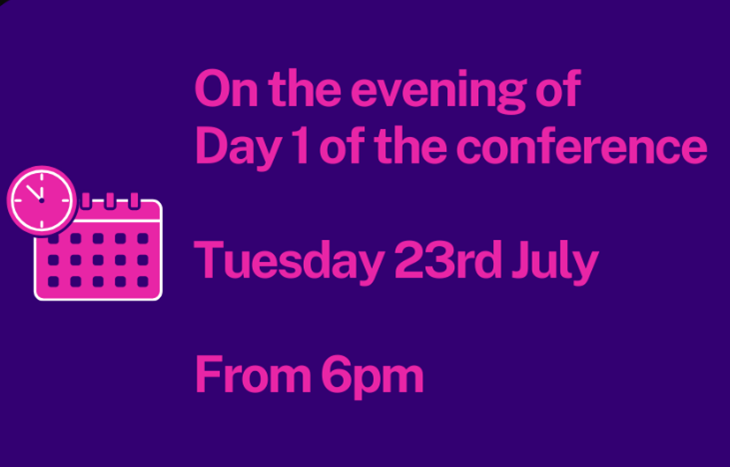
Connect, Collaborate, and Celebrate!
We are thrilled to invite you to the HACA Conference Networking Event, an exclusive gathering designed to bring together health and care analysts, leaders, and decision-makers. This event will take place on the first evening of the conference in the beautiful gallery of the Telford International Centre. 10/06/24Why Attend? Expand Your Network: Meet and mingle with peers in a relaxed, professional setting. Engage in Discussions: Part...

Prepare for an Exciting Conference Prelude: E-Lab Events Await!
Join us for a series of insightful events, leading up to #HACA2024 Conference, covering professional registration, decision-making in healthcare, and understanding waiting lists. 10/05/24Professional Registration for Data & Analytics Professionals Guiding Leaders to Better Quality Decisions: The Pivotal Rol...
Events
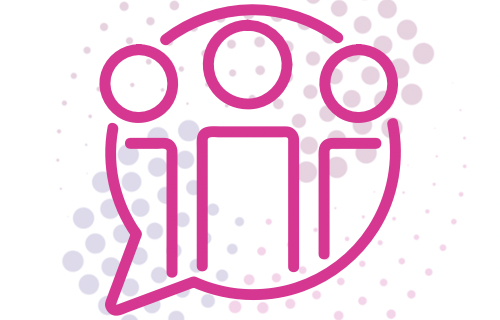
- Virtual Event
- 10th Jul 2024
Welcome to the final HACA 2024 E-Lab! Kent County Council Public Health have been actively using systems dynamic modelling (SDM) over a number of years for demonstrating the impact of prevention interventions in JSNA related reports. This year it is being actively used for scenario test the impact of commissioned health improvement services, part of an ongoing service review to improve effectiveness and reduce health inequalities. We present some ongoing SDM examples, particularly going into the model development design and testing, how stakeholders were engaged, how they influenced senior leadership decision making, team reflections around their experiences in SDM training and emphasising the importance of key enablers such as data linkage and other analytical expertise such as evaluation methods for robust assumptions generation for SDM.

- Virtual Event
- 08th Jul 2024
Welcome to this HACA 2024 E-Lab! Hear from people who have adopted the National Competency Framework for Data Professionals and the impacts that it is having on how they develop their skills and careers. This is not the shiny car sales brochure, but the voices from the frontline who are using the Framework to drive change. Who is it for? This e-lab session is for anyone at any level, who works in data and analytics in a health or care setting. What will you learn? After this session you will get an insight into the variety of ways people are using the Framework, the successes and challenges they are having, to inspire you to make a pledge and adopt the National Competency Framework for Data Professionals.
